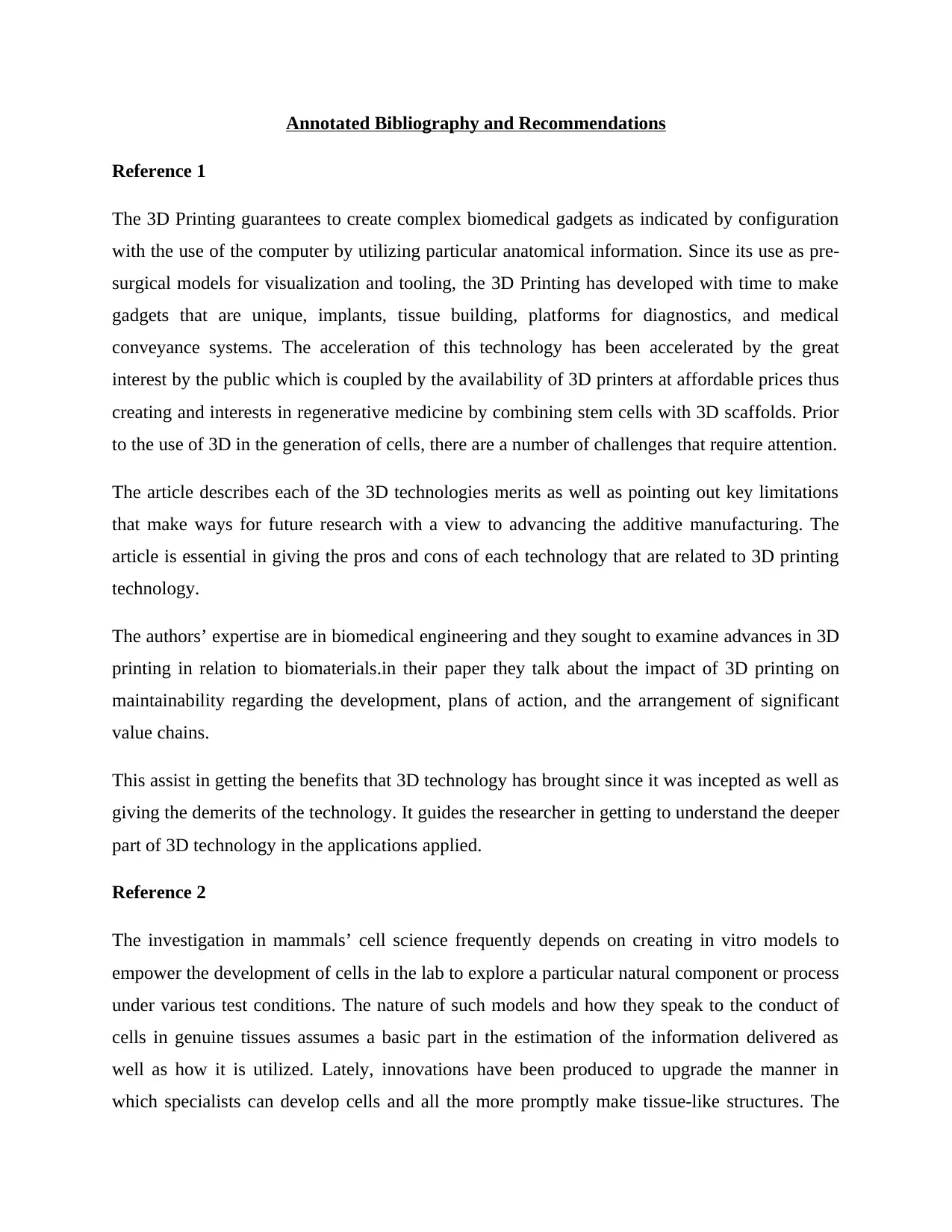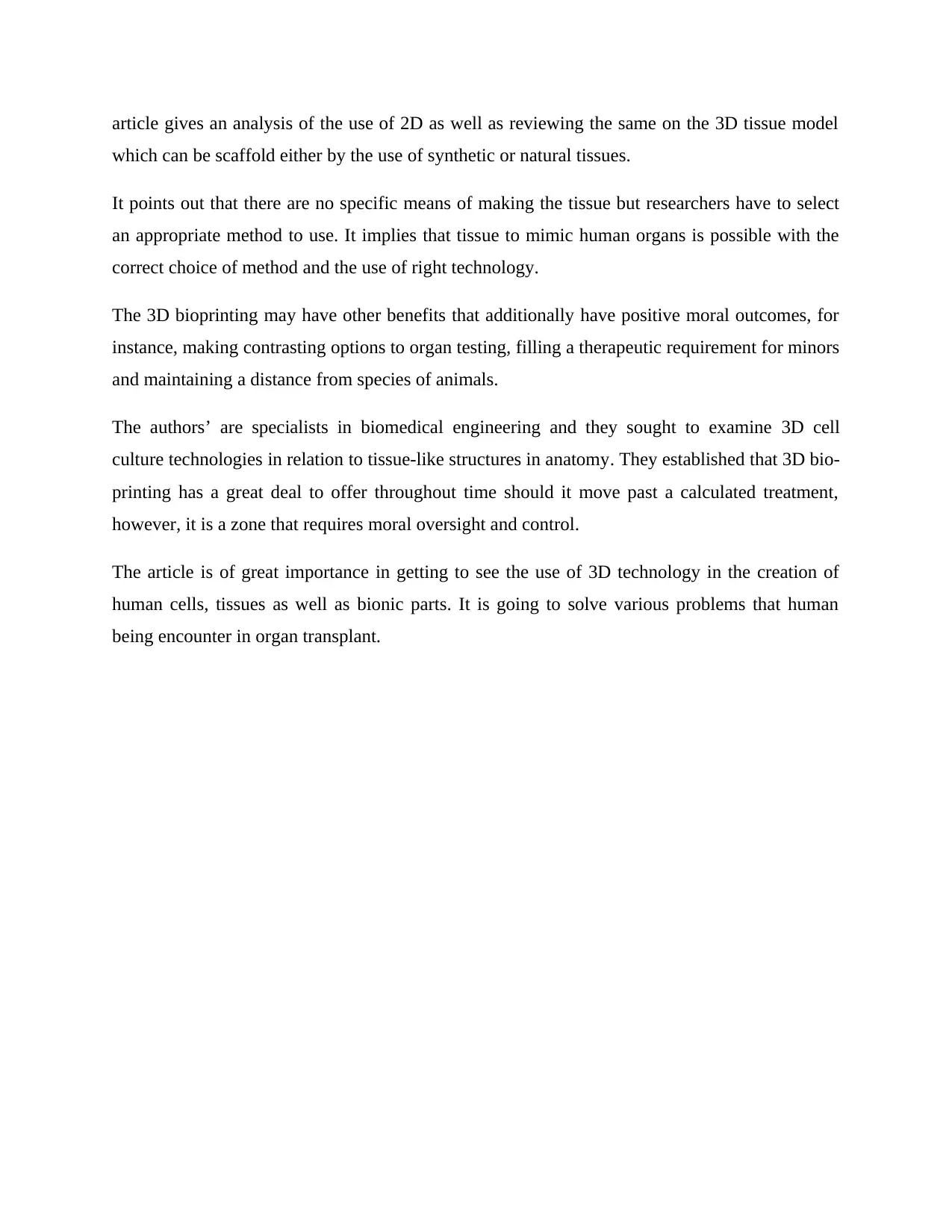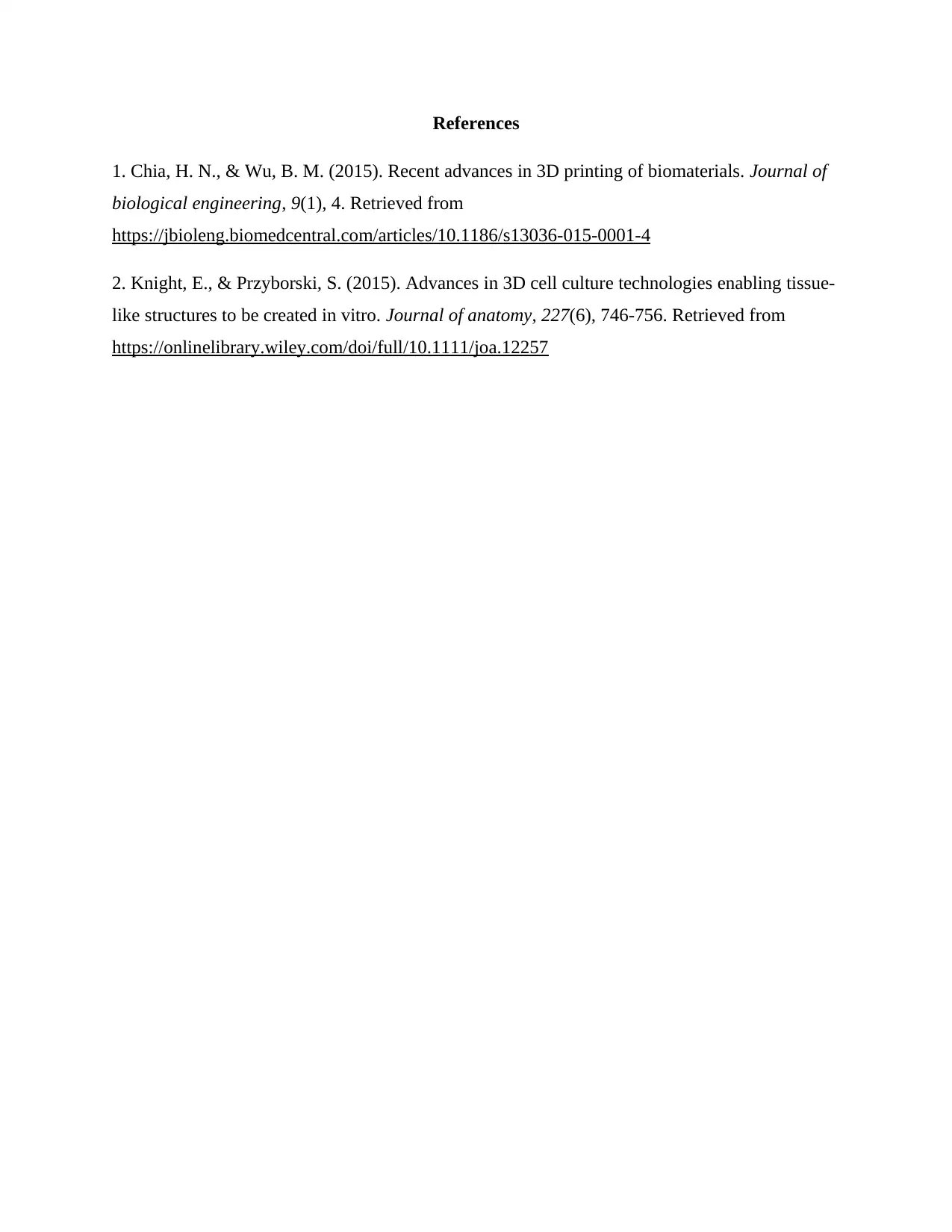Advances in 3D Printing and Cell Culture Technologies for Biomedical Applications
VerifiedAdded on 2023/06/12
|3
|690
|261
AI Summary
This annotated bibliography discusses recent advances in 3D printing of biomaterials and 3D cell culture technologies enabling tissue-like structures to be created in vitro. The authors examine the impact of 3D printing on maintainability and the development of cells in the lab to explore a particular natural element or process under various test conditions.
Contribute Materials
Your contribution can guide someone’s learning journey. Share your
documents today.
1 out of 3









![[object Object]](/_next/static/media/star-bottom.7253800d.svg)